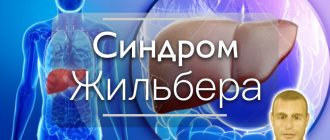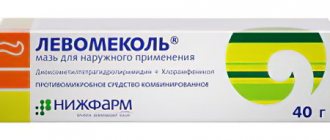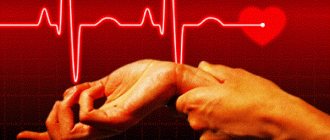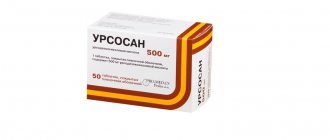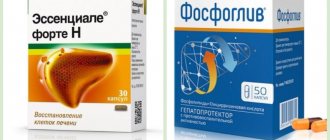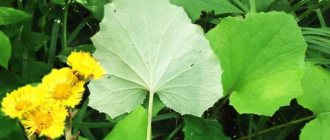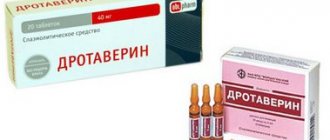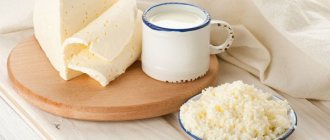2014
Gastroenterology uses choleretic drugs as treatment, prevention and dynamic monitoring of conditions in which symptoms of the digestive system appear. In particular, these may be diseases of the gallbladder, ducts or liver.
Biliary medications prevent fluid from stagnating in the digestive system and thereby facilitate the course of the pathological process. Bile is a specific secretion that the liver produces daily in quantities necessary for proper digestion of food. It accumulates in the cavity of the gallbladder, passes through the ducts and enters the gastrointestinal tract.
Functions of bile in the human body
The liver secretes bile, which is stored in the gallbladder. Here it acquires a certain concentration and, during meals, is released in portions into the duodenum. Burning plays a key role in human digestion. It is involved in the breakdown of fats and absorption of nutrients. With its help, intestinal motor function is realized. Bile has a bactericidal effect and inhibits the development of infectious processes in the digestive tract.
Under the influence of certain provoking factors, bile may stagnate in the bladder for too long. In this case, its lithogenicity increases, it becomes too concentrated and thick. This is always dangerous primarily due to the formation of stones.
The main causes of bile stagnation
Before you start using tablets or other forms of choleretic drugs for bile stagnation, you need to understand the possible causes of the disorder. Otherwise, the treatment will only have a temporary effect.
The main predisposing factors for bile stagnation:
- violations of the principles of rational nutrition;
- episodes of prolonged hunger, exclusion from the diet of almost all fats that cause the release of bile from the gallbladder;
- frequent dieting, the diet of which is not typical for the usual diet of a healthy and active person;
- chronic diseases of the liver and other organs of the digestive tract, which can disrupt the process of bile formation and bile excretion.
If during the examination specialists discover not only symptoms of bile stagnation, but also concomitant diseases, treatment in adults and children must necessarily include methods and drugs aimed at eliminating the identified pathologies. If you suspect you have gallbladder problems, get an ultrasound examination. It is accessible and safe. If you complain of pain and discomfort in the abdominal area, the doctor will still refer you for an ultrasound. By doing it in advance, you can save time.
How can you suspect that you have bile stagnation?
The insidiousness of gallbladder diseases is that they occur for a long time without pronounced symptoms. Therefore, obvious signs of bile stagnation usually appear several months or even years after the onset of the disease.
Possible symptoms of stagnation of bile in the gallbladder:
- feeling of heaviness, pain in the right hypochondrium;
- discomfort after eating fatty and fried foods, alcohol;
- bitter taste in the mouth;
- jaundiced skin tone;
- nausea, occasional vomiting mixed with bile.
Usually the symptoms of bile stagnation are mild. Most often, chronic moderate pain appears in the area of the right hypochondrium. They should alert you and force you to undergo ultrasound diagnostics.
Important! Timely treatment at the first signs of bile stagnation in the gallbladder prevents the formation of stones and avoids the need for surgical interventions in the future.
If your relatives had cholelithiasis or they had to undergo cholecystectomy and other similar operations due to diseases of the biliary tract, be especially attentive to your health and diet. Although hereditary predisposition to gallstone disease has not been officially proven, it is well known to specialists who have been monitoring patients with gallstones for decades.
Basic methods of treating bile stagnation
To treat bile stagnation, official medicine offers the following methods:
- choleretic drugs;
- following a diet for bile stagnation;
- choleretic herbs.
To achieve maximum effect, it is recommended to carry out complex treatment of bile stagnation in the gallbladder, which includes certain dietary restrictions, taking ready-made medications and course use of special herbal mixtures. Each of these methods is worth writing separately.
Choleretic agents
For bile stagnation, drugs from the following groups are used:
- choleretics;
- cholekinetics;
- Cholespasmolytics.
Choleretics increase the activity of the liver, which begins to produce more bile, help reduce its viscosity, reduce the inflammatory reaction and the risk of developing cholecystitis. Choleretics include drugs such as Hofitol, Nikodin, Allochol.
Cholekinetics normalize the contractility of the gallbladder and at the same time have a relaxing effect on the ducts. This creates favorable conditions for the outflow of bile and elimination of signs of stagnation. Cholekinetics include drugs such as magnesia, sorbitol, and xylitol.
Cholespasmolytics relieve painful spasms, weaken the bile ducts, which promotes the free exit of bile from the bladder. Similar drugs are prescribed for acute and chronic pain syndrome. A common antispasmodic is No-spa.
Choleretic drugs
Ready-made choleretic agents for bile stagnation should ideally be prescribed by a doctor. Drugs can be quite unpredictable, especially for people with latent cholelithiasis and calculous cholecystitis.
Allohol
Allohol is a natural herbal remedy based on dried bile. Additional components are plant extracts. The drug has been used for many decades as a choleretic agent. For information on how to take Allohol for bile stagnation, you can see the instructions from the manufacturer or ask your doctor. The standard dosage per day is 3-6 tablets. They are taken after meals. The course of treatment usually lasts a month.
Holenzym
Cholenzym contains an extract of animal bile and cattle pancreatic enzymes. The drug eliminates congestion in the gallbladder, facilitates digestion, and dulls pain. It is used not only for stagnation of bile, but also for other diseases of the digestive tract. Daily dosage: 2-3 tablets during or after meals.
Nikodin
The choleretic agent Nicodin contains derivatives of amidanicotinic acid and formaldehyde. The drug fights inflammation in the area of the gallbladder walls, which is necessary for people with cholecystitis and other concomitant diseases. The medicine accelerates the release of bile. Additionally, Nicodin has a bactericidal effect and prevents the proliferation of infectious pathogens in concentrated bile with increased lithogenic properties.
Hofitol
Chofitol has a choleretic and choleretic effect. The drug contains artichoke extract. Brown pills are familiar to many, as they are often prescribed by therapists and gastroenterologists for diseases of the liver and gallbladder. Hofitol is taken for a month, 2-3 tablets 3 times a day.
We invite you to watch the video - what doctors say about bile stagnation.
What choleretics do:
- activate the intestinal mucosa;
- increase the flow of fluid to the liver;
- affect digestion processes in the liver.
These products contain animal bile.
Based on the following plants, there are many traditional medicine recipes that promote the excretion of bile:
sunflower and olive oil;
- coriander and juniper oil;
- lingonberry extract;
- dandelion leaves.
These drugs can only be used after a special examination and consultation with a doctor, since many of these drugs have side effects, especially if a person has pancreatitis, gallstones and kidney stones, or jaundice.
Correct intake of choleretic herbal preparations:
normalizes bile secretion;
- improves blood quality;
- improves the functioning of the gastrointestinal tract;
- will prevent stool disorders.
What are herbal cholagogues, and which ones are the best? The list of drugs is wide.
Allochol is a choleretic that activates proper functioning
liver. It is taken constantly if there are problems with the excretion of bile. It contains garlic and nettle leaves, as well as dry bile extract. Available in tablets.
Karsil - has a positive effect on the liver, normalizes metabolic processes, restoring them. Consists of milk thistle berries.
Cholenzym is a complex preparation consisting of a powder that was extracted from the pancreas of animals and bile of cattle. It has a great effect on the process of digesting food. This is a natural drug that has a choleretic effect, which improves metabolic processes in the liver. This is one of the best drugs that remove bile. This drug is very popular, there are many positive reviews about it. Contains vitamins and ascorbic acid.
Holosas is an antimicrobial, diuretic, anti-inflammatory and tonic drug. This remedy is taken for diseases:
chronic hepatitis, when the flow of bile is impaired;
- chronic cholecystitis;
- alcohol poisoning;
- cholangitis;
- reduced immunity;
- metabolic disease.
In childhood and during pregnancy, these drugs must be taken very carefully, observing a certain dosage.
Herbal choleretic agents are corn silk, dandelion infusion, and lavender flower infusion.
Soapwort prevents the formation of stones in the gall bladder. Peppermint relaxes the ducts through which bile passes and promotes its good secretion. They also use a decoction of elecampane, fresh coltsfoot juice, a decoction of wormwood and many other herbs as a choleretic agent.
The well-known choleretic hepatoprotector Gepabene contains the fruits of milk thistle and the herb fumitory.
Thanks to the listed herbs and herbal choleretic agents, your liver and gall bladder will always be healthy.
*Review of the best according to the editors of expertology.ru. About the selection criteria. This material is subjective in nature, does not constitute advertising and does not serve as a purchase guide. Before purchasing, consultation with a specialist is required.
Digestion is a complete process, but it is divided into parts that seem opposite and incompatible. So, the stomach has a very acidic environment, and the duodenum is already alkaline. In order to reduce the acidity of gastric juice that enters the intestines, and neutralize the activity of gastric enzymes, and transfer the change of phases of digestion from acidic to alkaline (intestinal), a special liquid is produced in the liver, which is called bile.
Every day, approximately a liter of this fluid is formed and excreted from the body of an adult. The bile of a healthy person is greenish or yellow in color and tastes extremely bitter. Once formed, it is transported through its own ducts to the vesica fellea, or gall bladder, where it is stored. After contraction of the smooth muscles of the gallbladder, it is released into the intestinal lumen as needed, taking part in digestion.
Bile also helps emulsify, or dissolve, fats in the intestines and prepare them for digestion. It improves intestinal motility and increases the production of digestive hormones. Its role in binding and removing cholesterol from the body and the breakdown product of hemoglobin contained in the blood is very important. It's called bilirubin. Since this substance is not able to be filtered through the glomeruli, bilirubin is excreted through bile and leaves the body with feces.
Most often in clinical practice, conditions arise associated with the delayed formation of this fluid, with the difficulty of its entry into the small intestine, due to the development of cholelithiasis - stone disease, chronic inflammation of the bladder - cholecystitis and other pathologies of the pathways that excrete bile. The resulting chemical or mechanical obstacles to the normal passage of bile into the intestines cause a number of painful symptoms.
This is discomfort in the abdomen on the right, bitterness, nausea; in severe cases, obstructive jaundice, bloating, and discoloration of stool may occur. In order to normalize the passage of this important fluid, choleretic medications are used. This rating included the most effective and frequently prescribed drugs from this list. Choleretic drugs differ in their mechanism and indications for their use. The review begins with the so-called choleretics.
Herbs for bile stagnation
In addition to ready-made medications, it is recommended to use choleretic herbs for bile stagnation. If you have the time and desire, you can prepare them yourself, collecting plants at a certain period away from highways and potentially hazardous chemical plants. Choleretic herbs are dried with access to fresh air, but not in direct sunlight.
Important! If you do not know which plants are best to collect and combine with each other, it is better to use ready-made mixtures that can be purchased at the pharmacy.
The following herbs have a choleretic effect:
- corn silk;
- artichoke;
- sagebrush;
- immortelle;
- calendula;
- chamomile;
- bird knotweed;
- Birch buds;
- St. John's wort;
- shepherd's purse;
- barberry.
This is only a part of the herbs with a choleretic effect that can be used for bile stagnation. But they are the most studied and have proven effectiveness. It is not recommended to combine more than 5-10 plants due to the unpredictability of the therapeutic effect.
Herbal medicines
Considering the fact that the positive effect of herbal remedies on cholestasis has been proven by a number of studies, on the shelves of pharmacies you can easily find tablets and powders that have exclusively natural ingredients. This is about:
This is interesting: Viferon for papillomas, condylomas and warts: effectiveness, instructions and recommendations for use, review of analogues and reviews
- berberine bisulfate (barberry extract);
- tanacechol (tansy tablets);
- flamin (immortelle extract, presented in tablets and granules);
- Holosas syrup, based on aqueous rosehip extract;
- Holaflux (collection of herbs for making tea), etc.
Traditional recipes for bile stagnation
Based on certain plants, you can prepare traditional medicine recipes for bile stagnation. They can also be used to prevent the formation of stones if you have nagging pain under your right rib after the holidays, but there are no stones.
Oat infusion
A large amount of oat infusion has a pronounced choleretic effect and can be used as a tubage. But to prevent colic and achieve a gentle cleansing effect, it is recommended to use the product in small quantities.
Just brew a glass of oats with a liter of boiling water and let it sit in a thermos for several hours. During the day, take a sip of the infusion every hour. On this day, try to rest more, do not eat any fatty foods or alcohol. You can apply a warm heating pad to the area of the right hypochondrium to enhance the effect.
Decoction of St. John's wort and immortelle
To reduce the lithogenicity of bile, you can use a decoction of immortelle and St. John's wort. It is necessary to take the plants in equal proportions - 2 tablespoons each, add a liter of water and put on low heat, simmering for 10 minutes. Cool the finished broth, strain through several layers of gauze and use a glass several times a day after meals.
Camomile tea
If you are prone to bile stagnation, it is recommended to drink chamomile tea daily. It facilitates bile excretion and has an anti-inflammatory effect on the mucous membrane of the digestive tract. You can add a few tablespoons of infusion or decoction of oats, calendula, and immortelle to chamomile tea. In this combination, the herbal mixture will have a more pronounced choleretic effect.
Universal recipe: pour 1 tablespoon of chamomile (can be fresh or dry) with a glass of boiling water. Cover. Let it sit until the chamomile infusion has cooled. Strain. Take a third of a glass warm 3 times a day half an hour before meals or an hour after meals.
Rose hip
It’s great to brew simple rose hips. It is considered one of the best choleretic agents. You can use both fresh rose hips and dry ones. You need to drink in courses.
For a liter of water you need to take 4 - 5 tablespoons of rose hips, drink the infusion before meals, a cup a day, warm or cold. Children under 12 years old can drink rosehip drink 1/3 - 1/2 glass per day.
The best choleretic drugs are choleretics: stimulants of education
Agents that stimulate the formation of bile from its precursors can be natural, or true, synthetic, as well as herbal choleretic agents that have a bile-forming effect. True choleretics are often products of animal origin. The most popular choleretic drugs from all subgroups will be listed below. Of these, Allochol is a true choleretic, Odeston is a synthetic drug, and Holosas is a choleretic drug consisting of one herbal component.
Allohol
Allochol is perhaps the most popular and accessible “folk” choleretic medicine. This is a combined remedy, and Allochol contains dry cattle bile, dry nettle and garlic, as well as activated carbon. All these components together give a stronger choleretic effect than just bile alone. Allochol is able to increase contractions (peristalsis) of the intestines, and due to the presence of activated carbon, which has an antimicrobial and sorption effect, it reduces the processes of putrefaction and fermentation that can occur in the intestines.
Allochol is indicated in the complex therapy of chronic cholecystitis, cholangitis, and atonic constipation. It is usually taken in two tablets, after meals, so that it has the maximum choleretic effect. If the patient is prescribed fractional meals, then the drug should be taken no more than 4 times. This intake must be followed for a month, and then the dosage is halved. The course can be repeated, but between them it is necessary to take breaks of at least 2 months.
Allochol is produced by the domestic company Pharmstandard, and a large package containing 50 film-coated tablets costs only 42 rubles. In some pharmacies you can find it for 33 rubles, and the smallest package of 10 tablets costs only 12 rubles.
Advantages and disadvantages
Allochol works, “choleretic” quite mildly, unlike synthetic drugs. After all, it contains natural bile. But, nevertheless, at a sufficiently high dosage it can cause diarrhea and abdominal flatulence, and Allochol is contraindicated in acute ulcers, mechanical (obstructive) jaundice, and if there are stones in the gallbladder. This leads to a sharp increase in secretion, and if there is nowhere for it to go, then the bladder may expand and even rupture with the development of peritonitis. Allochol is contraindicated in acute and subacute hepatitis - inflammation of the liver, and in its progressive dystrophy. But this choleretic drug, taken according to indications, acts gently and helps improve digestion and normalize stool in a wide variety of groups of patients.
Odeston
Odeston belongs to the group of infrequently used synthetic choleretics, and it has a fairly pronounced choleretic effect. This product contains hymecromone in the form of an active substance, and is available in the form of tablets weighing 200 mg each.
Odeston reduces the phenomenon of stagnation, reduces the processes leading to the formation of cholesterol stones, that is, reduces the loss of cholesterol in the form of crystals, and is indicated in the treatment of diseases such as biliary dyskinesia of the hyperkinetic type, chronic cholecystitis and cholangitis. It is prescribed after surgery on the gallbladder, and due to a chronic decrease in bile secretion.
Odeston is used half an hour before meals, 1 or 2 tablets, three times a day. The daily dose should not exceed 6 tablets. The course of treatment is about 2 weeks. It is not recommended to skip a dose, but you should not make up for it later by taking a double dose at once. Odeston is produced by the Polish company Polfa, and you can purchase a package of 50 tablets in the fall of 2020 in large cities of the Russian Federation at an average price of 550 rubles.
Advantages and disadvantages
Like all choleretic drugs, Odeston has contraindications. These include obstruction formed in the bile ducts, the phenomenon of renal and liver failure, gastric ulcers, bleeding disorders and childhood. The drug has side effects due to its rather strong choleretic effect. This can lead to bloating, diarrhea, allergic reactions and abdominal pain. Since the product is synthetic, many doctors note, along with its strong effect, that it is somewhat rough: Odeston is not intended for gentle stimulation.
Holosas
Perhaps, Holosas is one of the most delicious and pleasant medicines in general, since it is a concentrated syrup of rose hips with sugar. In some cases, if it is not hidden from small children, they may drink the entire bottle, and after that they will suffer from profuse diarrhea due to an overdose, but still, nothing bad will happen to them anymore.
Holosas is indicated for various viral hepatitis, for inflammation of the bile ducts and bladder, for poisoning with various drugs, medications that are metabolized, secreted into bile, it is indicated for poisoning with alcoholic beverages. Holosas can be prescribed as a general tonic and for vitamin C deficiency.
It should be used 2 to 3 times a day, adults - 1 teaspoon per dose, and children - half a teaspoon or even less. Holosas is produced by the domestic company Altaivitamins CJSC, and the cost of one 140 ml bottle averages 86 rubles.
Advantages and disadvantages
Holosas is a natural herbal monomedicine, and the only contraindications will be individual intolerance, as well as severe diabetes mellitus, since Holosas contains sugar. The drug has no side effects, again with the exception of individual intolerance. Few people will experience unpleasant side symptoms from the delicious rosehip syrup. This remedy is inexpensive, Holosas can be added to boiling water and drunk for general strengthening purposes. Taking one teaspoon of Holosas completely satisfies the daily need for ascorbic acid.
Diet for bile stagnation
A diet for bile stagnation helps to empty the gallbladder in a timely manner and avoid dangerous complications, including cholecystitis and the development of gallstones. It is recommended to eat small meals, never overeating. A common mistake is to give up fat almost completely. But fatty acids are vital for humans. If he does not receive vegetable and animal fats in limited quantities, bile stagnation and other adverse health consequences occur.
The main rule of nutrition during bile stagnation is the absence of long intervals between meals, when the gallbladder does not empty for a long time. It is also necessary to avoid overloading the biliary tract and avoid consuming fried, fatty, overly spicy foods and alcoholic beverages.
Causes of the disease
The main harmful factors that directly affect the functioning of the gallbladder include:
- increased nervousness,
- instability of the emotional background;
- consumption of cholesterol foods;
- unbalanced diet, lack of a rational eating regimen;
- very low physical activity;
- excess weight;
- taking specific medications;
- weak abdominal muscles.
Here I would like to separately examine the cause of a violation of the outflow of bile, such as a bend in the gallbladder. Choleretic drugs are also prescribed for this diagnosis. But first, about the pathology itself.
So, bending of the gallbladder is a common pathological condition of the anatomical shape of the organ. As a result, a dysfunction of the organ occurs - decreased synthesis and deterioration of secretion excretion, stagnation of bile, etc.
The bend can be congenital (the onset of pathology occurs in the fifth week of pregnancy, when this organ is formed in the embryo) or acquired. And if in the first option it is hardly possible to do anything to prevent the pathology, then in the second it is often the person himself who is to blame.
Causes of acquired inflection in an adult:
- enlargement of the digestive organ or those located close to it (kidneys, liver);
- bladder hypermobility;
- disrupted (or complete absence) diet - either fasting or overeating;
- eating fatty, spicy and smoked foods;
- bending under the influence of physical activity, in particular lifting weights, a fixed state in a sitting position, abruptness of movements;
- obesity;
- consumption of alcoholic beverages (especially carbonated ones);
- prolapse of internal organs with sudden weight loss (due to diets, among other things).
Usually, for disorders caused by this reason, no lists of symptoms are identified. But if the deformation of the organ is obvious, then the signs include:
- constipation/diarrhea;
- loss of appetite;
- attacks of nausea/vomiting;
- heartburn/belching;
- bitterness in the mouth;
- pain in the right hypochondrium;
- bloating and heaviness after meals;
- increased sweating.
In this case, a dull pain can radiate not only to the right side, but also to the collarbone, spine and even to the cervical region.
The degree of excess also varies, and depending on the severity of the condition, symptoms may intensify. Only a specialist can make an accurate diagnosis.
Products for bile flow
With the help of choleretic products, when bile stagnates, you can perform a light tubage. But you must be sure that there are no stones. To drain bile, olive or flaxseed oil with a small amount of lemon juice is most often used. They empty the gallbladder and prevent pain in the right hypochondrium.
Juice therapy has a choleretic effect. Juices are drunk on an empty stomach, a few tablespoons each, for 1-2 weeks. All this time it is necessary to follow a diet low in animal fats. However, you should not consume any fried foods or alcohol. To cleanse the gallbladder, it is recommended to drink a mixture of radish and turnip juice with pulp. It stimulates the entire digestive system and relieves constipation. For stagnation of bile, pear juice is useful. But without habit, it can provoke loose stools.
In the fall, you can drink rowan juice as a course. It causes quite strong contractions of the gallbladder. It is taken on an empty stomach, 15-20 ml. You should not increase the dose, especially for those who are using this remedy for the outflow of bile for the first time. On the contrary, you should start with a teaspoon, increasing the dosage by the end of the first week of use to 20 ml. The duration of such folk treatment for bile stagnation usually lasts no more than 2 weeks.
For home tubing, you can use a mixture of lemon juice and mineral water. This composition is taken in the morning on an empty stomach, after which you need to lie down with a warm heating pad under your right side. Cleansing the gallbladder from thickened bile is accompanied by diarrhea.
The following articles may be useful to you: How to properly clean the gallbladder What is gallbladder dyscholia Biliary sludge in the gallbladder Useful herbs for the liver and pancreas
The best choleretic-kinetics: stimulators of bile removal
Choleretic drugs on this list are divided into two types of opposite effects. If the bladder is hypotonic, its smooth muscles are flabby and weak, then it is necessary to increase its tone and enhance its ability to contract. At the same time, these drugs reduce tonic tension and increase the lumen of the structures of the common bile duct. They simply irritate the intestines by activating a cascade of gastrointestinal hormones (cholecystokinin). An example of such a choleretic drug would be magnesium sulfate, or magnesium.
These drugs are prescribed mainly for hypotonic biliary dyskinesia, congestion in the gallbladder with a decrease in its tone. These drugs are indicated for gastritis with low acidity, as well as cholekinetics, which contract the gallbladder, are indicated during duodenal intubation in a healthy person.
The second group of drugs includes antispasmodics, which relax the excessively contracted gallbladder, reduce its spasm, and at the same time relax the bile ducts. This allows you to improve the removal of bile, and an example of such cholekinetics is No-shpa, Papaverine, or the stronger atropine and platiphylline, which are used in medical institutions and when calling an ambulance.
These drugs are necessary for hypertensive forms of dyskinesia, in the presence of stones in the gall bladder and bile ducts. They are able to reduce pain, which often occurs against the background of spasm of the biliary tract and in the presence of cholelithiasis.
Let's look at the most popular and effective cholekinetics, which are sold in pharmacies and included in the rating.
Magnesium sulfate
Magnesia is the simplest and most accessible choleretic and laxative. This colorless powder, easily soluble in water, has an intense bitter-salty taste, and magnesia is unpleasant to drink. But in addition to the choleretic effect, it also has an anticonvulsant effect, helps normalize heart rhythm, has a hypotensive effect and can fight constipation. Magnesia is used for cholecystitis and cholangitis, to obtain a cystic portion of bile during duodenal intubation, for hypotonic dyskinesia of the gallbladder, and to cleanse the intestines. It is necessary to apply magnesium by dissolving one packet (25 g) in one glass of warm water and drinking between meals 3 times a day, before meals. In this case, after an average of one or two hours, the drug will have the necessary choleretic effect, which will last for 4 or even 6 hours. Usually, after this, a certain loosening of the stool occurs, since the osmotically active magnesium solution will promote an intensive influx of water into the intestinal lumen.
Magnesium sulfate is produced by the Moscow Pharmaceutical Factory, and one 25 g package costs an average of 32 rubles.
Advantages and disadvantages
The advantages of magnesia include its universal availability and low cost, the onset of a quick effect, and a simple and understandable mode of application. But this drug also has contraindications. You should not take magnesia if the patient has loose stools, symptoms of renal failure, low blood pressure and slow heart rate (bradycardia). Magnesia is contraindicated in patients with various cardiac arrhythmias, since it can significantly worsen their condition, especially in the case of complete atrioventricular block, when impulses from the atria are disconnected from ventricular contractions.
Sorbitol
Sorbitol, or more precisely, sorbitol, is a polyhydric alcohol, and in addition to being a choleretic agent, it has an osmotic and laxative effect. Sorbitol is also used in some cases to reduce the symptoms of intoxication: it removes the toxic substance into the intestinal lumen.
Sorbitol is produced in the form of a powder for oral administration, in sachets of 5 g, sometimes in powder, packaged in 200, 300, 500 g. Sorbitol is indicated for use in cases of biliary dyskinesia of the hypotonic type, in chronic hepatitis in complex therapy, tendency to constipation.
It is necessary to use sorbitol for choleretic purposes by dissolving 5 g of the drug in half a glass (100 ml) of slightly warmed water. You need to take this sweet solution 10 minutes before meals twice a day. The course of treatment is 1 month. Sorbitol is produced by the domestic company Sladky Mir, and you can purchase the largest package weighing 500 g for an average price of 122 rubles.
Advantages and disadvantages
The advantage of sorbitol is its low cost and wide range of applications, since it can be prescribed not only for dyskinesia and cholecystitis, but also for the treatment of constipation. However, sorbitol is contraindicated in all acute conditions, with intolerance to fructose, which is part of it, and if you exceed the required amount, and make the solution either too strong or drink too much, intense diarrhea, dry mouth, nausea, and symptoms of dehydration may occur . But sorbitol can be safely used by diabetics, since it does not contain glucose.
No-spa (drotaverine)
The most famous antispasmodic tablets No-shpa, or drotaverine hydrochloride, are produced by the Hungarian pharmaceutical company Hinoin. No-spa is a remedy that reduces spasms of smooth muscles not only of the gallbladder and bile ducts, but also of the smooth muscles of the urinary tract, therefore this drug is indicated for renal colic.
No-spa allows you to reduce severe pain in hypertensive forms of biliary dyskinesia, cholangitis, and cholecystitis. No-spa is available not only in tablets, but also in solutions, so very often it is administered intramuscularly. Only antispasmodics are indicated for pain in the abdominal cavity, in the condition of “acute abdomen”. The fact is that if you use strong painkillers, you can relieve pain and miss the condition when urgent surgery is required, for example, in acute appendicitis. Antispasmodic drugs do not have an analgesic effect, and all it can do is relax the muscles.
Therefore, if there is a focus of progressive inflammation in the abdominal cavity, for example, with the same calculous cholecystitis, then No-Spa will not help, but if the pain is caused by a spasm in the neck of the gallbladder, then the desired effect will be achieved, the spasm will be resolved, the bile will be released into the intestines, and the patient's condition will improve.
To use No-shpa in tablets it is necessary from 1 tablet of 40 mg to 6 tablets per day, that is, no more than 2 tablets three times a day, it is advisable to take it before meals, so that during the meal it manifests its effect and relaxes smooth muscles of the biliary tract. One package of No-shpa in the amount of 24 tablets costs about 100 rubles.
Advantages and disadvantages
The big advantage of No-shpa is its fairly high activity and speed. Symptoms of overdose such as arrhythmia are quite rare, but for this to happen, the patient must initially have severe heart disease. No-spa is a universal drug; it not only helps to increase the outflow of bile, but it also helps to normalize the outflow of urine, since the same smooth muscle elements exist in both the ureters and the bile ducts. Few side effects were noted. Rare symptoms include tachycardia, headache and nausea, allergic reactions. But, despite all the minor disadvantages, No-Spa is quite in demand, and has long existed in every home medicine cabinet as a remedy of choice for abdominal pain, since only taking antispasmodics will avoid serious complications if surgical intervention is necessary.
Attention! This rating is subjective in nature, is not an advertisement and does not serve as a purchase guide. Before purchasing, consultation with a specialist is required.
